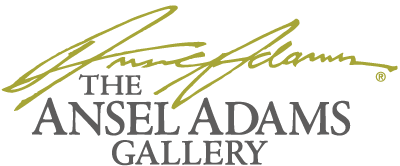
About Roman Loranc
Before arriving in the United States he did not have access to the high-quality photographic books that are found so readily in America. What he remembers most about the work he saw in Poland was that it had a general dullness to the prints; so when he first saw original works by the great photographers Ansel Adams, the Westons and Morley Baer, he was in awe of the richness of tone, the depth of the blacks and the glowing light that seemed to come from the prints. He immediately knew that this is what he wanted to produce technically with his own work.
Loranc’s first inspiration as a visual artist came from the paintings of Chelmonski, Stanislawski and Pankiewiz. He was drawn to the richness of their work, their sense of drama and use of light and dark. A painter interprets his subject before it is painted, filtering the scene using his skill and artistic sensibility. This was something that he wanted to achieve with his photography.”
He enjoys photographing meditative things, like tule reeds, when the light is soft and just right for such photography. Such smaller intimate subjects, which are often overlooked because of their commonplace nature, he finds to be quietly expressive. He believes that minimizing what is included in the frame not only helps focus the viewer’s attention, but more clearly conveys the message of the photograph.
“I appreciate that light is a messenger,” he says, “revealing the world at every instant.” “The magic of photography is its ability to slice a moment out of time, which you can later hold as a print in your hands. There are special moments when I know that I have connected with something bigger than myself, when I have focused the camera on the essence of my subject. At that moment I feel a fullness that I cannot describe in words. It is a visual experience, and I can only refer you to my finished print to explain the fascination and connection I feel for the place I have photographed.”
Loranc first began photographing river tules at the Nature Conservancy (Consumnes River Preserve) in Galt, part of the Great Central Valley of California. His aim was to show the subtle beauty of the disappearing wetlands. Many people overlook this beauty because it is not easily accessible, but Loranc likes the idea that this area is being preserved more for wildlife than for people. He hopes that when people see his photographs they will want to help protect and preserve these fragile lands. This is the crucial impetus behind his efforts with the camera.
Today, Roman says he faces different challenges than he did many years ago when he first decided to make fine art photography his vocation. Originally, when he began to work solely on photography, he was challenged by not having a secure source of income. Now his biggest challenge is time. It is the essence of everything in life and how we spend it determines our happiness and personal fulfillment.
The work of Roman Lorance is not digital in any respect. Everything is done by his own hand and the toned, silver-gelatin prints he crafts are the final result. A computer display can not convey everything that he is able to capture in his prints – not the depth or richness of blacks, the sparkle of the highlights, the subtlety of the tonality. There is a presence one feels when standing in front of a hand-printed photograph, it’s as if one can bear witness to the soul of the photographer. The computer display and the hand-printed silver-gelatin print are not equivalents!
Lorance doesn’t follow the traditional theory that one must have all the shades of gray plus complete black and complete white in order to have a great photograph. Each photograph demands a unique print interpretation in order for it to have voice and be compelling. The only thing all great art, including photographs, has in common is the intense passion of the artist for his or her work. Technical skills must be secondary to the overall impression of the photograph because they are craft and great art is more than technical skill. A great photograph is one that is infused with the artist’s passion.
Roman Loranc photographs with a Linhof 4×5 field camera. A good deal of his work is done with a 210mm Nikkor lens. He only uses Kodak Tri-X film, which he stockpiles in a freezer because he feels uncertain what the availability of film may be in the not-to-distant future. He develops his negatives with the Gordon Hutchings PMK formula from Photographer’s Formulary using a Jobo processor and then prints with Ilford glossy paper which is archivally washed, selenium and sepia toned and then archivally dry mounted. All work is done by the artist.
Roman Loranc’s newest book, Traces, features photographs of tules with poems by Robert Lax and an essay by Dr. Anthony Bannon, the former Executive Director of George Eastman House. The book was been in production for over a year as he and his publisher developed a special printing process to reproduce the photographic images as authentically as possible. Traces is his fourth publication of photography collections.
Roman Loranc Curriculum Vitae
Roman Locanc Artist Statement





